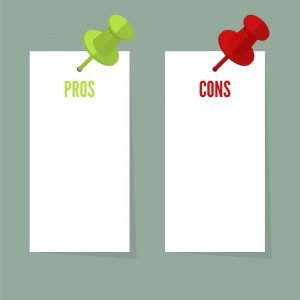Key Takeaways
- Retainers are the most cost effective way for businesses to work with freelancers
- Freelancers should always position their services under the retainer model
- Understand how billable rates translate to retainers to provide transparency and value to clients
As a communications freelancer, you’re probably wondering if it’s better to charge clients by the hour or by a monthly retainer. This is a popular question, and it can be the source of much debate. The short answer is that monthly retainers are the way to go.
The Benefits of Retainers

The ideal situation is to have a handful of steady clients that pay monthly retainers. This makes it easier to schedule your time and estimate earnings. From the client’s perspective, a retainer ensures they have a dedicated communications resource. For some companies, it also means they don’t have to incur the costs of hiring a full-time employee with benefits, as long as the freelancer isn’t on board for 40 hours per week.
The longer a freelancer works with the client, the more profitable the relationship becomes for both parties. As the freelancer becomes more immersed in the organization, they get to know the company culture and the decision makers and can get things done quickly. The client benefits because the freelancer can work autonomously as an extended part of the team. This frees the client to focus on other activities.
Meanwhile, the freelancer decreases their learning curve and increases their productivity and profitability with every client interaction. The more they learn, the faster they can complete tasks and bring more value to the client. This frees them to secure another retainer client without cutting into the profitability of their existing base.
The Issues with Hourly Billing Rates
It goes without saying that with a retainer, there will be periods when the work exceeds the estimated hours per month. And there will also be times when it’s lighter than usual. This is why it’s important to establish a minimum monthly retainer that realistically maps to the client’s needs and the scope of work outlined in the contract. When done right, retainers are almost always the best option for the client and the freelancer.
Imagine a scenario with a communications freelancer that bills $100 an hour. The first three months on the job, the freelancer bills 40 hours or $4K a month. By the fourth month, they’re able to hit the same monthly goals in 30 hours. In this scenario, the more the freelancer knows about the client’s business, the faster they complete assignments and get stronger results. Now the freelancer is faced with the dilemma of fudging the hours and submitting a $4K invoice, which the client is used to seeing. The freelancer that continues to invoice 40 hours for 30 hours of work risks their reputation, references, and contract. Or their other option is to take on more projects with the same client to “make up” the 10-hour difference.
In the hourly billing rate model, the freelancer’s growing intellectual knowledge about the client impacts their profitability. Inevitably, certain activities will take longer than estimated due to unforeseen circumstances such as extended client review cycles. When the communications activities take longer than estimated, the client might run out of budget or question how long each task takes. These situations lead to uncomfortable conversations that detract from achieving the client’s goals.
How Retainers Benefit Clients
Essentially, if the freelancer is able to achieve or exceed the client’s goals within a reasonable and agreed-upon range of hours per month, the retainer model allows both of them to profit. The communications freelancer profits by being able to achieve the goals faster without compromising their reputation. The client wins by being able to achieve their goals and in some situations, they avoid having to hire a full-time employee. The key is for both parties to focus on results and the value each gets from the investment, not the amount of hours it takes to complete the work.

There are three scenarios where an hourly billing rate works well for both the client and freelancer.
- When the freelancer is hired for a project where they’re an expert in a specific area, and can efficiently achieve top-notch results.
- When the freelancer is subcontracting to an agency or as part of a larger team of freelancers and the team can divide and conquer the work. Freelancers should consider this if there’s an opportunity to align with a larger team for more exposure to additional work and freelancers.
- When the freelancer and client are still getting to know each other and want to be able to see how well they work together before signing a retainer. In this instance, either can suggest a project and present the scope as “$2K or not to exceed 20 hours,” for example. By presenting a scenario that is amenable to both parties, it and gives each other enough time to determine if the match is a good fit.
Ultimately, both parties must do what’s best for their business. Yes, there might be times when a freelancer has to lower their rate to keep a steady stream of work — but they shouldn’t make it a habit. If they underestimate your value, their client will, too. Always remember that great clients are everywhere, and they’re eager to work with talented freelancers.



